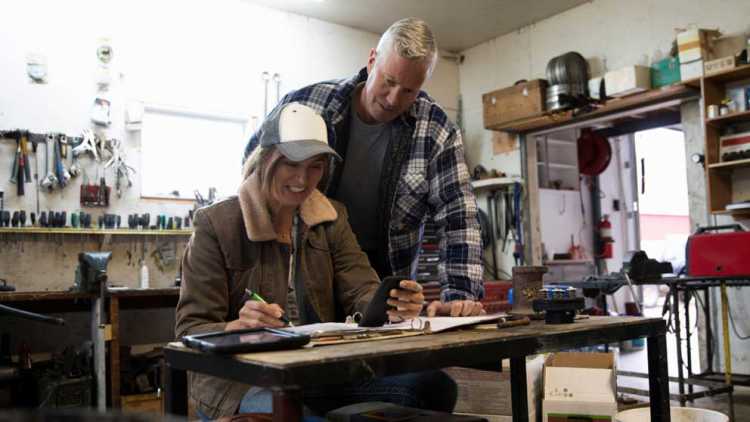Smooth out decision-making with process and a plan

The following is a fictional case study created by MNP.
The Smith family is known in their neighbourhood as resourceful and progressive. Gill is the patriarch of the family farm that includes all three of his adult children: Susan, Andy and Larry. His children share Gill’s drive to grow and diversify the operation, and they make a formidable team.
Gill and Larry focus on crop production, Susan oversees the beef feedlot and Andy looks after marketing, bookkeeping and human resources. They get along very well, but all four are high energy, independent and maybe a bit impulsive. They all enjoy the division of responsibilities and decision-making autonomy.
A perfect storm of mix-ups made it obvious they needed to change the way they worked.
The operation is very successful, but as the crop, beef and the new trucking operation grow, more problems arise due to a lack of communication and planning. It all came to a head when a perfect storm of mix-ups made it obvious they needed to change the way they worked and made decisions.
Missed communication
Larry was at an auction sale and spotted a loader tractor in decent shape with low hours. He knew Susan was looking for a second loader tractor to move bales. He called but couldn’t reach her. He ended up buying the tractor thinking it would be perfect for her, and he could use it as an auger tractor when required.
Larry sent a picture of the tractor to Susan with the good news that he had bought it, only to get a call telling him she had already bought a used one online. The tractor Larry found wouldn’t work for her anyway. It had a cab, and she needed an open-station tractor to move bales into and out of low-overhead buildings. The discussion got heated in a hurry.
Two days later, Gill was planning to deliver a load of grain to an elevator offering an attractive spot bid for immediate delivery. But when he got to the yard, there was only one truck available and it was in the shop for a brake job. No one had told him all the other trucks were hauling grain for customers. He had to back out of the grain commitment and was not happy.
Gill had everyone come to his house for lunch and they had it out. Andy listened to the tractor and truck arguments, then chimed in with his own ongoing exasperation that he has no idea what the others are buying, selling or charging to accounts.
Getting organized
Once the grievances were aired, Andy suggested they come up with a system to go from a free-wheeling management style with decisions made on the fly to a more organized system. A meeting with their accountant and business advisor laid out some options to help them develop a formal decision-making process. They learned growing businesses of any stripe eventually hit a point where increasingly complex business structures and more people making decisions make it necessary to consider options such as a management hierarchy, board of directors or family council.
The business advisor explained how important it is to understand and separate the three-circle model of family, ownership and management, and the day-to-day business decisions. Ideally, there would be a formal governance process for each of the circles. Family decisions are made by a family council, ownership decisions are made by a board of directors, and business management decisions are made by family or staff with clearly defined responsibilities. A key message was that the initial path setting up a formal process for decisions might not be perfect.
Next steps become clear
With all the concerns out in the open, the family was eager to get started.
A family council, led by Susan, would meet quarterly. Non-farming family members would be included. This group would focus on family issues – potentially hiring next-generation kids, living arrangements in farmhouses owned by the company, dealing with arising family issues of health, retirement, increasing or decreasing involvement, etc.
An advisory board would be created with Gill as chairman for a defined two-year term to get things rolling. In addition to the family members active in the farm business, the advisory board would include several trusted non-family members, with professional advisors brought in as required. Andy was chosen to be CEO, overseeing the business, reporting to the chairman of the board and following the board’s direction.
The first task for the advisory board would be to review and select a process for decision-making when members can’t reach consensus. There are many options, both complicated and simple, but a defined process that everyone agrees to will enable a successful board. All family members knew it would take time and effort to move to a more formal process, but they also acknowledged that the freestyle approach would eventually stall their progress and success.
MNP is a leading national accounting, tax and business consulting firm in Canada.
From an AgriSuccess article.

Strategies for anyone who owns an ag-related business to stay connected to their vision and goals.
